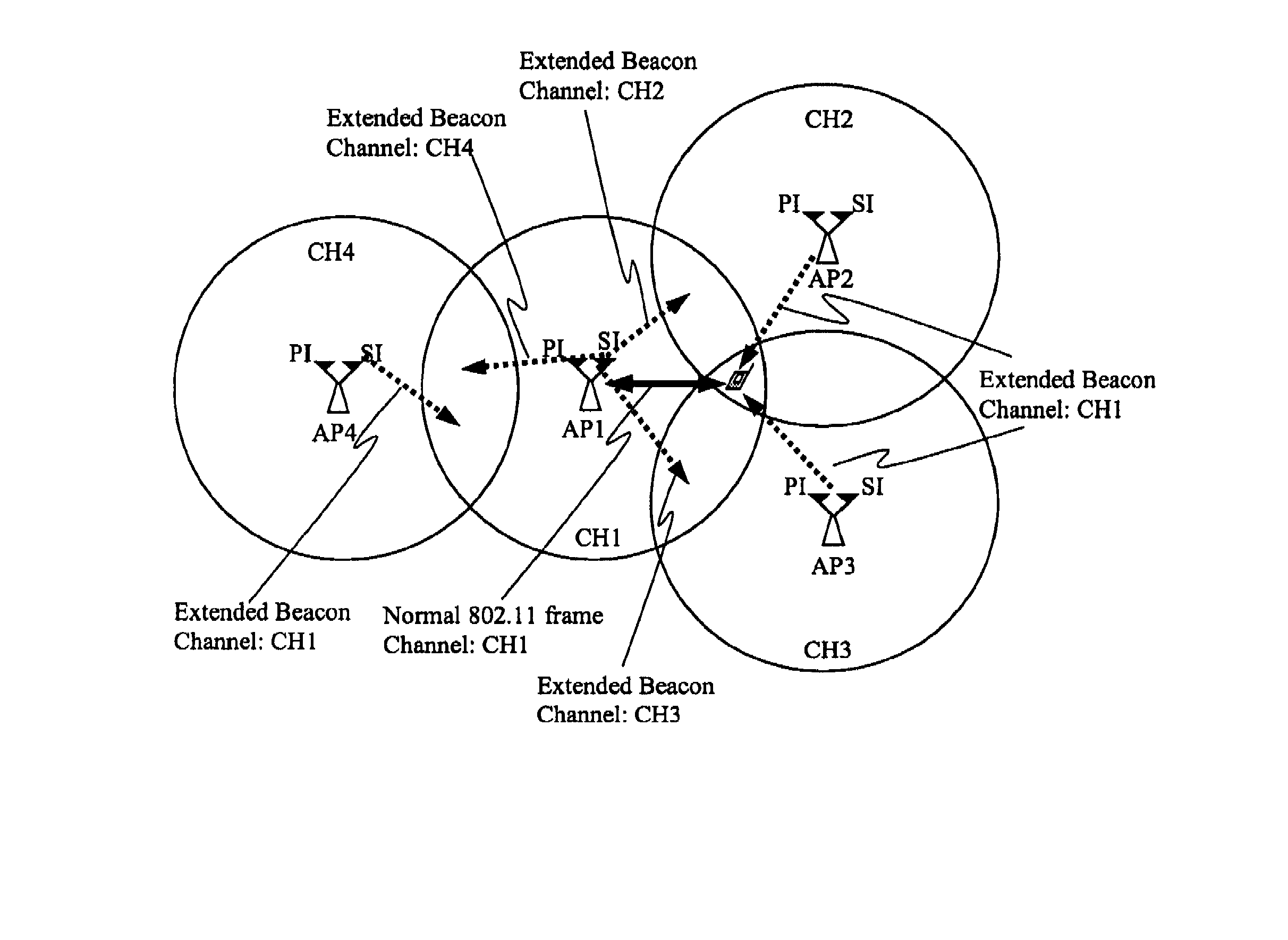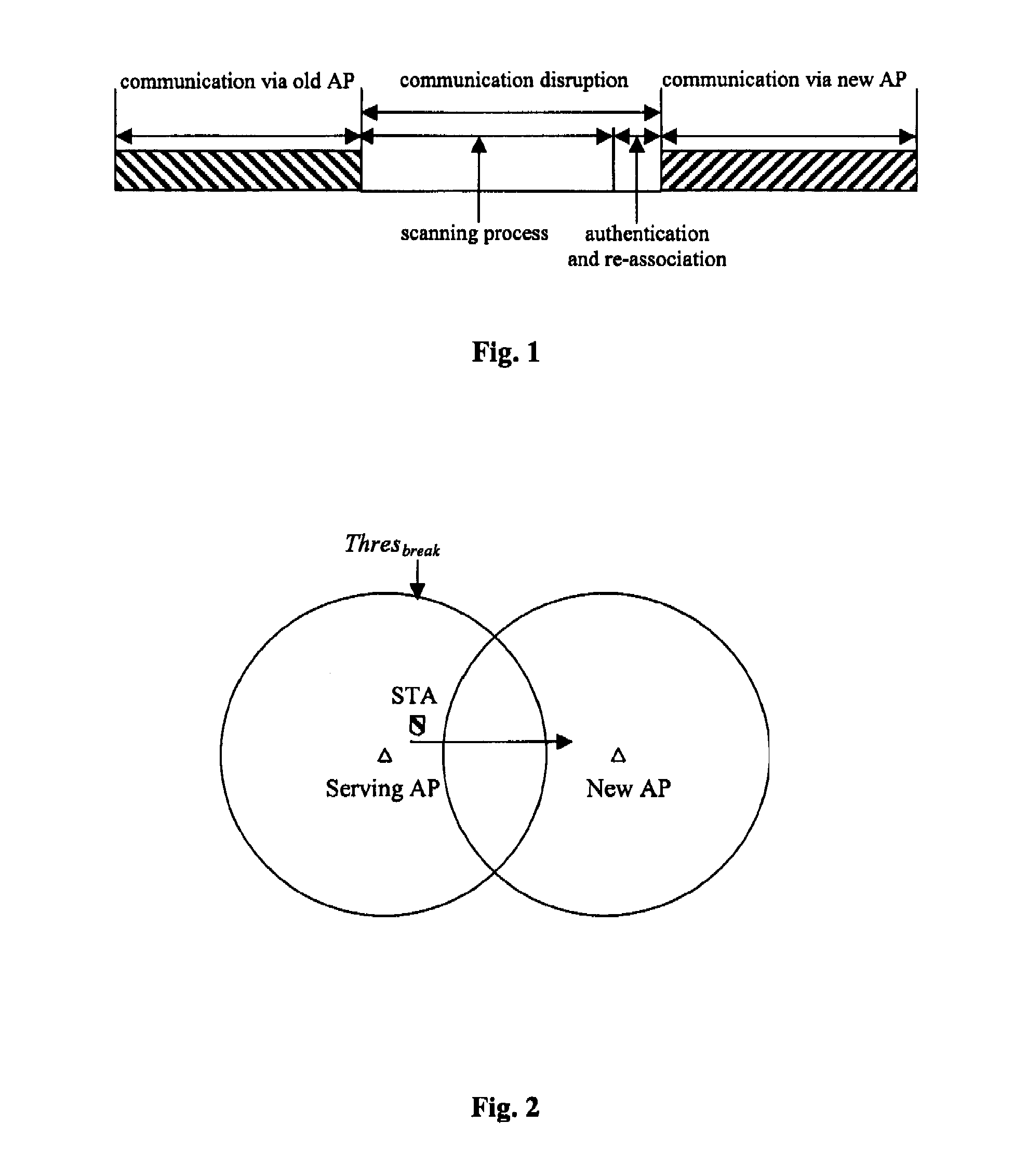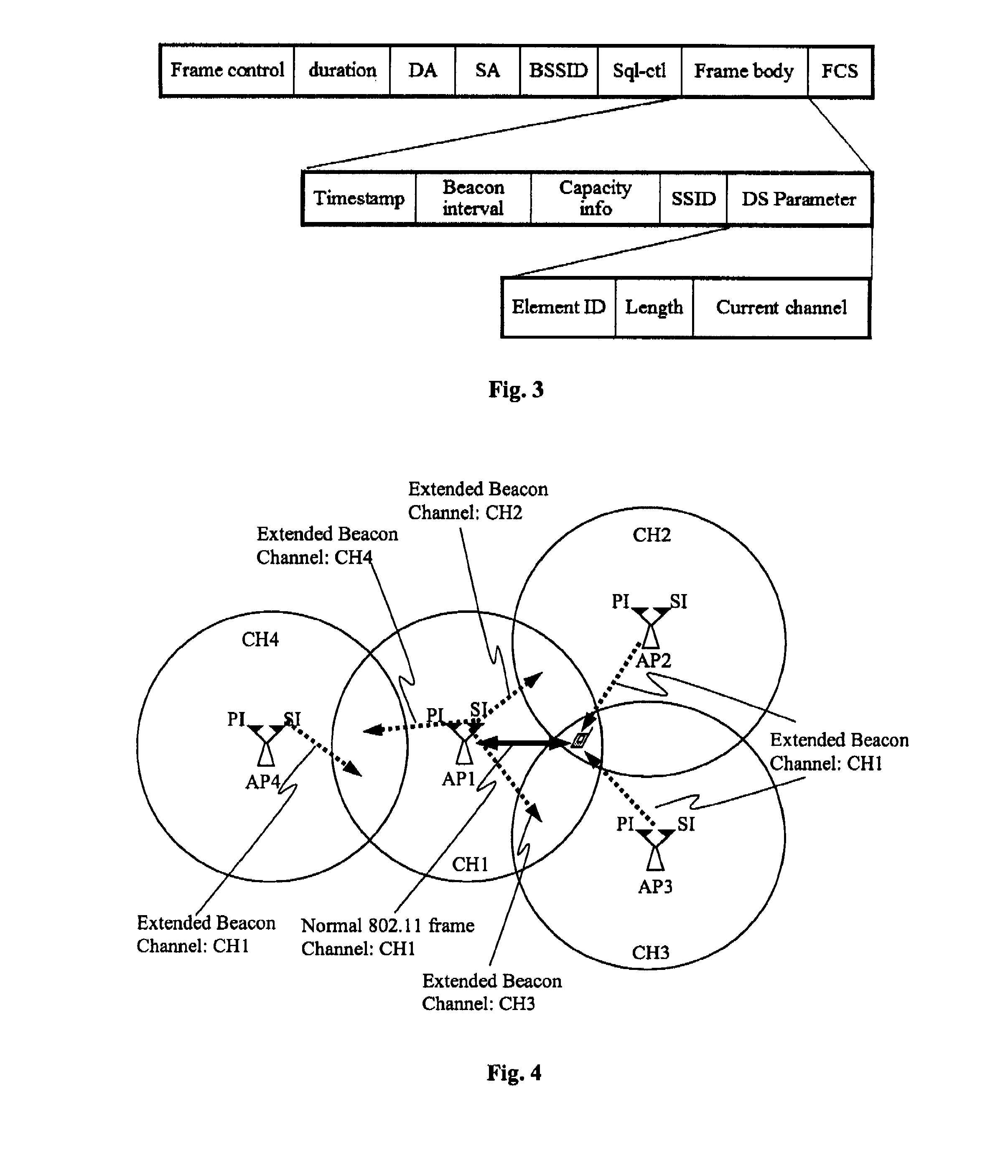Methods, device and system for access point facilitated fast handoff
a technology of access point and access point, applied in the field of wireless communication, can solve problems such as significant deployment hurdles, and achieve the effects of reducing handoff latency, fast link-layer handoff, and reducing latency and packet losses during hando
- Summary
- Abstract
- Description
- Claims
- Application Information
AI Technical Summary
Benefits of technology
Problems solved by technology
Method used
Image
Examples
Embodiment Construction
[0034]The present invention provides methods, devices and systems for performing fast link-layer handoff of wireless service between APs of a wireless network.
[0035]In overview, the present invention relates to wireless communications devices or units and wireless communication systems. The former is often referred to as client stations (STAs), such as laptop, PDA, smart phone equipped with WLAN interface, and so on. The latter is often referred to as access points (APs) and the network behind them, which provides services such as video, voice and data communications to STAs. More particularly, various inventive concepts of the invention are embodied in STAs and APs as well as methods used therein for providing a handoff of video, voice and data communications services between APs of a wireless network through AP based pre-break scanning. AP based pre-break scanning is defined as such means by which an AP, equipped with two wireless interfaces, periodically use its secondary interfa...
PUM
 Login to View More
Login to View More Abstract
Description
Claims
Application Information
 Login to View More
Login to View More - R&D
- Intellectual Property
- Life Sciences
- Materials
- Tech Scout
- Unparalleled Data Quality
- Higher Quality Content
- 60% Fewer Hallucinations
Browse by: Latest US Patents, China's latest patents, Technical Efficacy Thesaurus, Application Domain, Technology Topic, Popular Technical Reports.
© 2025 PatSnap. All rights reserved.Legal|Privacy policy|Modern Slavery Act Transparency Statement|Sitemap|About US| Contact US: help@patsnap.com



